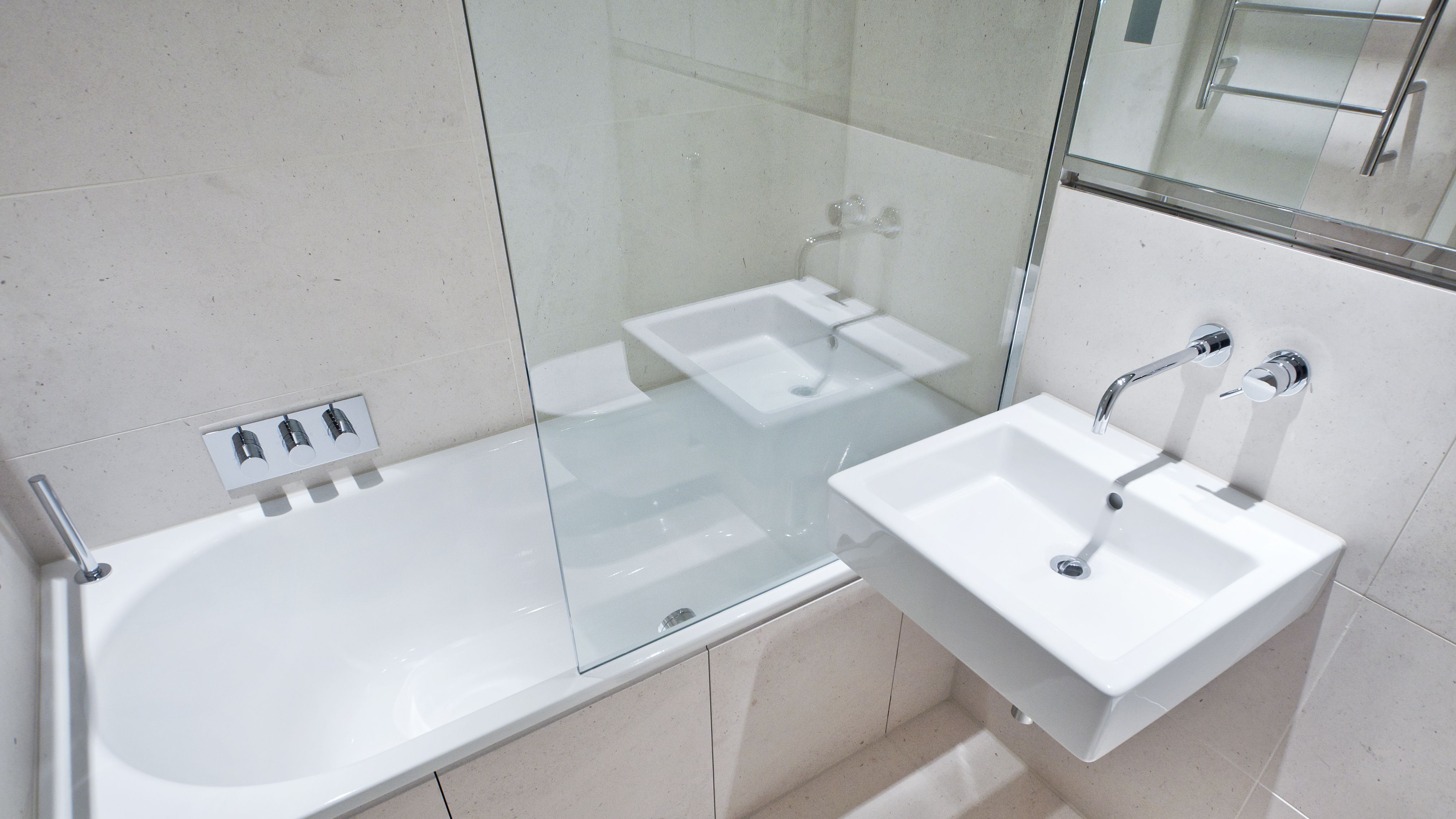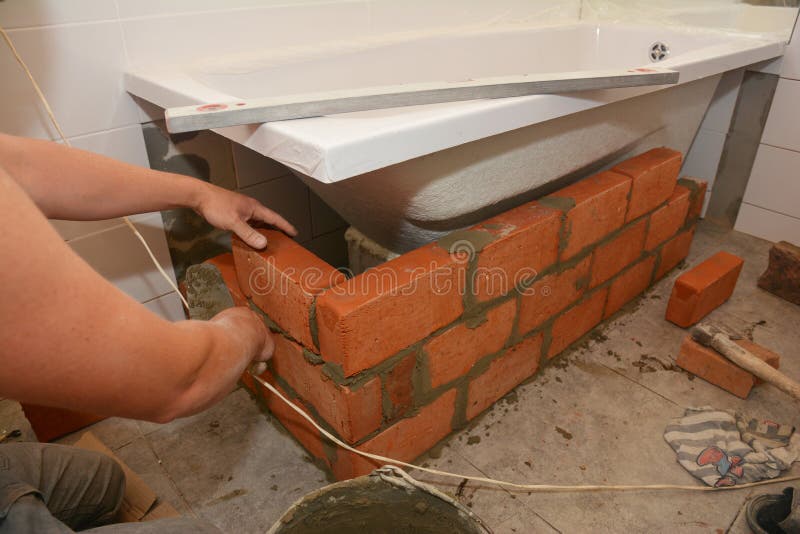Just How To Replace A Tub (For Novices).
Just How To Replace A Tub (For Novices).
Blog Article
The article author is making several good points on the subject of How to Install a Bathtub Yourself overall in this content below.

Installing a tub isn't specifically brain surgery, yet it does require strong plumbing, woodworking, as well as sometimes, tiling abilities. Changing an old tub with a brand-new one is also a reasonably hard project. If the old tub is easily easily accessible, the task can relocate quickly; if you need to open up a wall surface to remove the old tub and position the brand-new bath tub, the job is much harder. In either situation, the job is within a residence handyman's abilities, although you will certainly require an assistant to move out the old tub as well as set in the brand-new one. See to it you have actually qualified yourself for the work and are comfortable attempting it. Instead of working with a service provider to take control of a halfway-completed task, it is much better to take into consideration using one prior to you begin. Chances are you may need a professional plumber to make tube connections.
This short article will certainly assist you set up a brand-new bath tub in your washroom if you have actually currently acquired a brand-new bathtub as well as don't need to alter the plan of your previous supply of water pipes.
Your tools as well as material checklist should comprise the following:
Removing Old Taps
If you need to change old faucets with brand-new ones as a part of your installment, after that the first thing you must do is detach the supply of water. After doing so, activate the faucets to drain any water continuing to be in the system. The procedure of eliminating the existing taps can be quite troublesome because of the restricted access that is often the instance.
Make use of a container wrench (crowsfoot spanner) or a tap tool to undo the nut that attaches the supply pipelines to the taps. Have a towel prepared for the remaining water that will certainly originate from the pipes. As soon as the supply pipes have been removed, use the very same tool to loosen the nut that holds the faucets onto the bath/basin. You will certainly need to quit the solitary taps from transforming throughout this process. Once the faucets have been gotten rid of, the holes in the bath/basin will certainly have to be cleaned of any kind of old sealing substance.
Before carrying on to fit the brand-new taps, compare the pipe connections on the old faucets to the brand-new faucets. If the old faucets are longer than the brand-new faucets, after that a shank adapter is required for the new taps to fit.
Suitable New Touches
If the tails of the brand-new taps are plastic, then you will certainly need a plastic connector to prevent damages to the thread. One end of the port fits on the plastic tail of the faucet and also the various other end offers a connection to the current supply pipelines.
If you require to fit a monobloc, after that you will require decreasing couplers, which connects the 10mm pipeline of the monobloc to the standard 15mm supply pipe.
Next off, position the tap in the placing opening in the bath/basin making sure that the washers are in place in between the tap and the sink. Protect the tap in position with the producer supplied backnut. Once the faucet is firmly in position, the supply pipes can be attached to the tails of the taps. The faucets can either be linked by utilizing corrugated copper piping or with typical tap ports. The previous type should be linked to the faucet ends first, tightening just by hand. The supply pipes can later on be attached to the other end. Tighten up both ends with a spanner after both ends have actually been connected.
Setting up the Bath tub
Using both wooden boards under its feet, place the tub in the called for position. The wooden boards are handy in evenly spreading the weight of the bath tub over the area of the boards rather than concentrating all the weight onto four little factors.
The following goal is to guarantee that the tub is leveled all round. This can be attained by checking the spirit level and adjusting the feet on the bath tub up until the spirit level reads degree.
To mount faucets, fit all-time low of the furthest adaptable faucet connector to the ideal supply pipeline by making a compression join; then do the exact same for the various other faucet.
Switch on the supply of water as well as inspect all joints as well as brand-new pipework for leakages and also tighten them if necessary. Fill up the tub as well as also check the overflow electrical outlet and also the typical outlet for leakages.
Lastly, deal with the bathroom paneling as described in the maker's instruction manual. Tiling and securing around the tub should wait till the bathtub has been used at least once as this will settle it into its final position.
Getting ready for the Setup
First of all, the supporting structure provided with the bathroom should be fitted (if called for) according to the producer's instructions. Next off, fit the taps or mixer to the bath tub. When fitting the tap block, it is essential to see to it that if the tap features a plastic washing machine, it is fitted in between the bath as well as the taps. On a plastic bath, it is also sensible to fit a supporting plate under the faucets device to stop stress on the tub.
Fit the versatile tap connectors to the bottom of the two taps making use of 2 nuts as well as olives (sometimes supplied with the bathtub). Fit the plug-hole outlet by smearing mastic filler round the sink outlet hole, and afterwards pass the electrical outlet with the hole in the bath. Utilize the nut supplied by the producer to fit the plug-hole. Check out the plug-hole outlet for an inlet on the side for the overflow pipe.
Next off, fit the end of the flexible overflow pipeline to the overflow electrical outlet. After that, screw the pipeline to the overflow face which ought to be fitted inside the bathroom. Ensure you use every one of the supplied washing machines.
Link the trap to the bottom of the waste electrical outlet on the bathtub by winding the string of the waste outlet with silicone mastic or PTFE tape, as well as screw on the trap to the electrical outlet. Connect the bottom of the overflow tube in a similar manner.The bathroom ought to currently be ready to be suited its final placement.
Tiling Around the Tub
In the area where the bathroom satisfies the tile, it is needed to seal the joins with a silicone rubber caulking. This is necessary as the fitting can relocate sufficient to crack an inflexible seal, triggering the water to penetrate the wall surface between the bath and the tiling, causing problems with wetness as well as feasible leakages to the ceiling below.
You can choose from a selection of coloured sealants to blend in your components and installations. They are marketed in tubes as well as cartridges, and also are capable of securing gaps as much as a width of 3mm (1/8 inch). If you have a larger void to fill, you can load it with spins of drenched paper or soft rope. Remember to always fill up the bathtub with water before securing, to permit the movement experienced when the bathtub remains in use. The sealant can split rather early if you do not consider this motion prior to sealing.
Additionally, ceramic coving or quadrant tiles can be utilized to border the bath or shower tray. Plastic strips of coving, which are easy to use as well as reduce to size, are additionally easily offered on the marketplace. It is advisable to fit the ceramic tiles making use of water-resistant or water resistant sticky and grout.
Bathtub Installation
How Important Is A Bathtub To Your Home?
High-quality baths, showers, and other bathroom updates are necessary when considering a smart investment in your home. It’s a room that you go to every day and one that is constantly being used by guests.The bathroom is one of the top trafficked rooms in a home and also one of the most valuable in terms of home resale.
Install Piping Before Tub
You will be using your existing drain and waste vent system, but pipes required include the hot and cold water supply lines and a pipe leading to a shower head. A mixing valve and shower head are also needed. Air chambers may be required.
Position the Tub
Lower the tub into place so that the continuous flange fits against the wall studs and rests on 1’x4' or 2’x4' supports. Anchor the tub to the enclosure with nails or screws inserted through the flanges into the studs.
NOTE: Remember, bathtubs and shower stalls may require support framing. A bathtub filled with water is extremely heavy, so check building codes and framing support before installing the tub.
Assemble Drain Connections
Assemble the bathtub drain connections by connecting the tub overflow with the tub drain above the trap, not beyond it. The trap will have a compression fitting that screws over the arm of the overflow assembly.
Place a Pipe For the Shower Head
First, locate a brass female threaded winged fitting and attach it to a framing support via a screw or a nail. Then run a pipe up the wall for the shower head. Sweat or solder the other side of the brass fitting to the top of the pipe.
Attaching Hot and Cold Water Lines
Attach your water lines for both hot and cold by sweating these directly into the hot and cold ports of the mixing valve. The mixing valve will be how water enters the tub’s system, not by the pipes themselves.
Install the Spout
Extend a piece of 1/2 inch pipe, or whichever length is specified in the manufacturer’s instructions, for the tub spout. Sweat on a male threaded fitting at the end of the pipe or use a brass nipple of the proper length and a 1/2 inch cap.
NOTE: At this point you should have your rough-in plumbing work inspected before proceeding further.
Check For Leaks
Restore the water pressure and check the drain connection and the supply pipes for any sign of leaking.
estore the Bathroom Wall
Replace the wall with moisture-resistant drywall as a base for your wall covering. Seal the joints between the wall and your new tub with silicone caulk as protection against water seepage.
https://www.berkeys.com/2016/12/02/bathtub-installation-dallas/

Do you like more info about A Step-by-Step Guide to Installing a Bathtub? Make a short review down the page. We will be glad to listen to your opinion about this piece. Hoping that you come back again in the future. Sharing is nice. Who knows, you may be helping someone out. I appreciate reading our article about How to Install a Bathtub: Install an Acrylic Tub and Tub Surround.
Or Book Technician Here Report this page